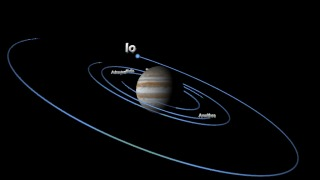Planets and Moons
ID: 11173
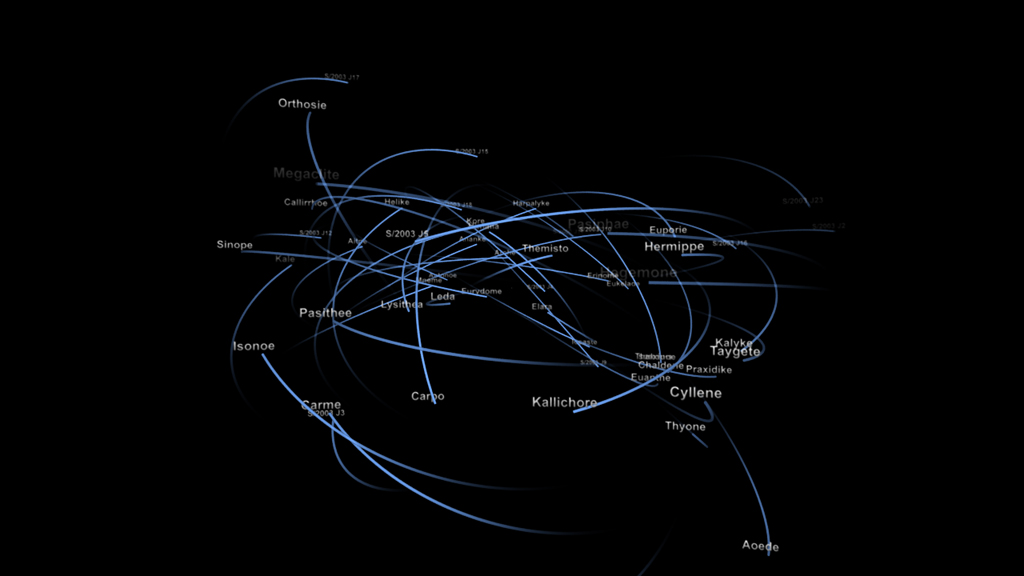
NOTE: The orbital plane of the moons in these visualizations is incorrect. The Galilean moons should be aligned to Jupiter's equator.
Jupiter, the largest planet in the solar system, has 67 moons and counting. Ranging hundreds of thousands to tens of millions of kilometers away from the gas giant, their orbits vary wildly in shape and size. The inner moons, many of which have been imaged close-up by NASA spacecraft, have regular, circular orbits matching the angle of Jupiter's spin. But beyond this orderly scene lies a plethora of oddly shaped moons. Likely the remains of collisions between asteroids snatched up by Jupiter's massive gravitational pull, these moons have long, elliptical orbits that are angled in multiple directions and can take years to complete. Watch the visualization to see the orbits of 63 of Jupiter's moons. Starting with the eight closest orbits, which include the large Galilean moons Europa, Io, Ganymede, and Callisto, the visualization gradually zooms out, revealing the tangled array of Jupiter's many distant moons.

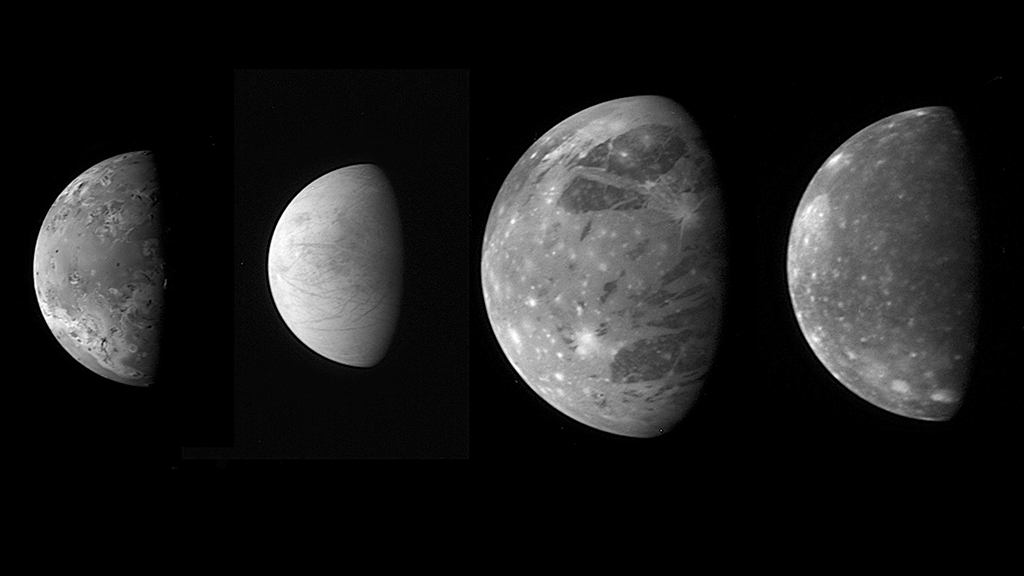
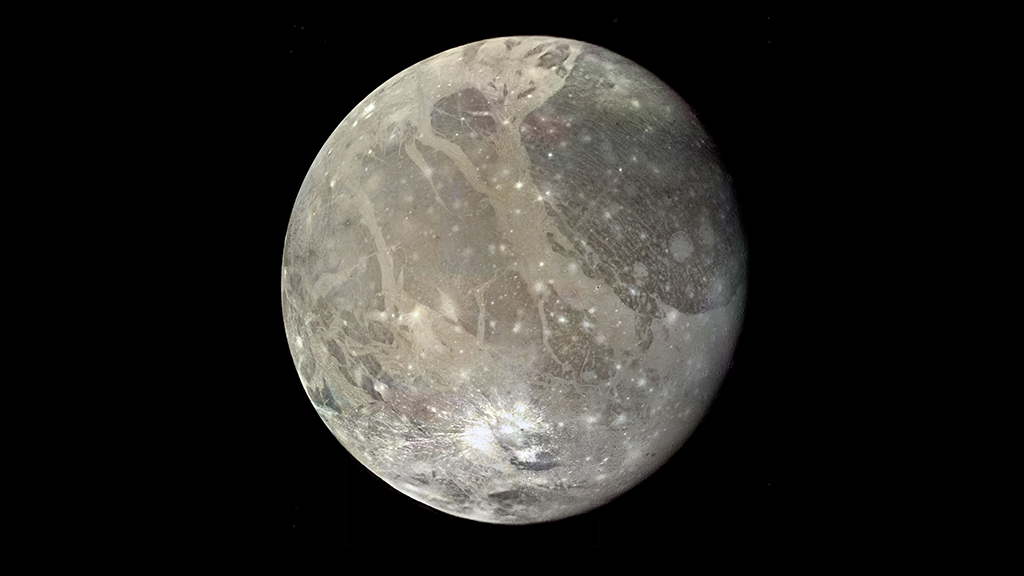
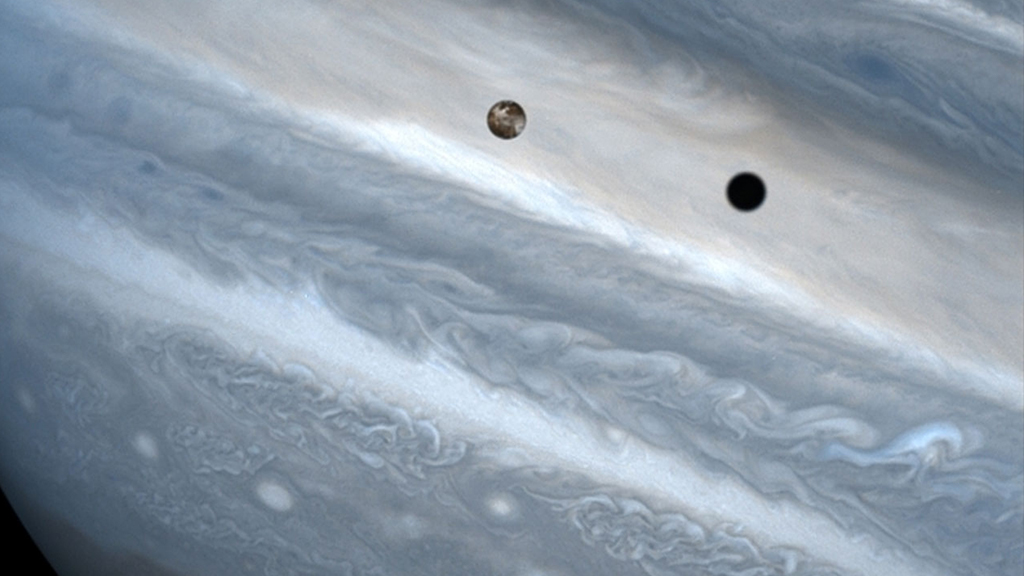
Jupiter's Many Moons

Jupiter, the largest planet in the solar system, has 67 moons and counting. Ranging hundreds of thousands to tens of millions of kilometers away from the gas giant, their orbits vary wildly in shape and size. The inner moons, many of which have been imaged close-up by NASA spacecraft, have regular, circular orbits matching the angle of Jupiter's spin. But beyond this orderly scene lies a plethora of oddly shaped moons. Likely the remains of collisions between asteroids snatched up by Jupiter's massive gravitational pull, these moons have long, elliptical orbits that are angled in multiple directions and can take years to complete. Watch the visualization to see the orbits of 63 of Jupiter's moons. Starting with the eight closest orbits, which include the large Galilean moons Europa, Io, Ganymede, and Callisto, the visualization gradually zooms out, revealing the tangled array of Jupiter's many distant moons.




Related Story
Story Credits
Visualizers/Animators:
Greg Shirah (NASA/GSFC)
Ernie Wright (USRA)
Tom Bridgman (Global Science and Technology, Inc.)
Producer:
Michael Starobin (HTSI)
Lead Scientist:
Amy A. Simon (NASA/GSFC)
Lead Writer:
Alex Kasprak (USRA)
Greg Shirah (NASA/GSFC)
Ernie Wright (USRA)
Tom Bridgman (Global Science and Technology, Inc.)
Producer:
Michael Starobin (HTSI)
Lead Scientist:
Amy A. Simon (NASA/GSFC)
Lead Writer:
Alex Kasprak (USRA)
Please give credit for this item to:
NASA's Goddard Space Flight Center
Innermost moons image courtesy of NASA/The Galileo Project
Galilean moons image courtesy of NASA/JHU-APL/Southwest Research Institute
Ganymede image courtesy of NASA/JPL/Ted Stryk
Hubble image courtesy of NASA/ESA/Lowell Observatory/J. Spencer
NASA's Goddard Space Flight Center
Innermost moons image courtesy of NASA/The Galileo Project
Galilean moons image courtesy of NASA/JHU-APL/Southwest Research Institute
Ganymede image courtesy of NASA/JPL/Ted Stryk
Hubble image courtesy of NASA/ESA/Lowell Observatory/J. Spencer
Short URL to share this page:
https://svs.gsfc.nasa.gov/11173
Keywords:
NASA Science >> Planets and Moons
SVS >> App
https://svs.gsfc.nasa.gov/11173
Keywords:
NASA Science >> Planets and Moons
SVS >> App
